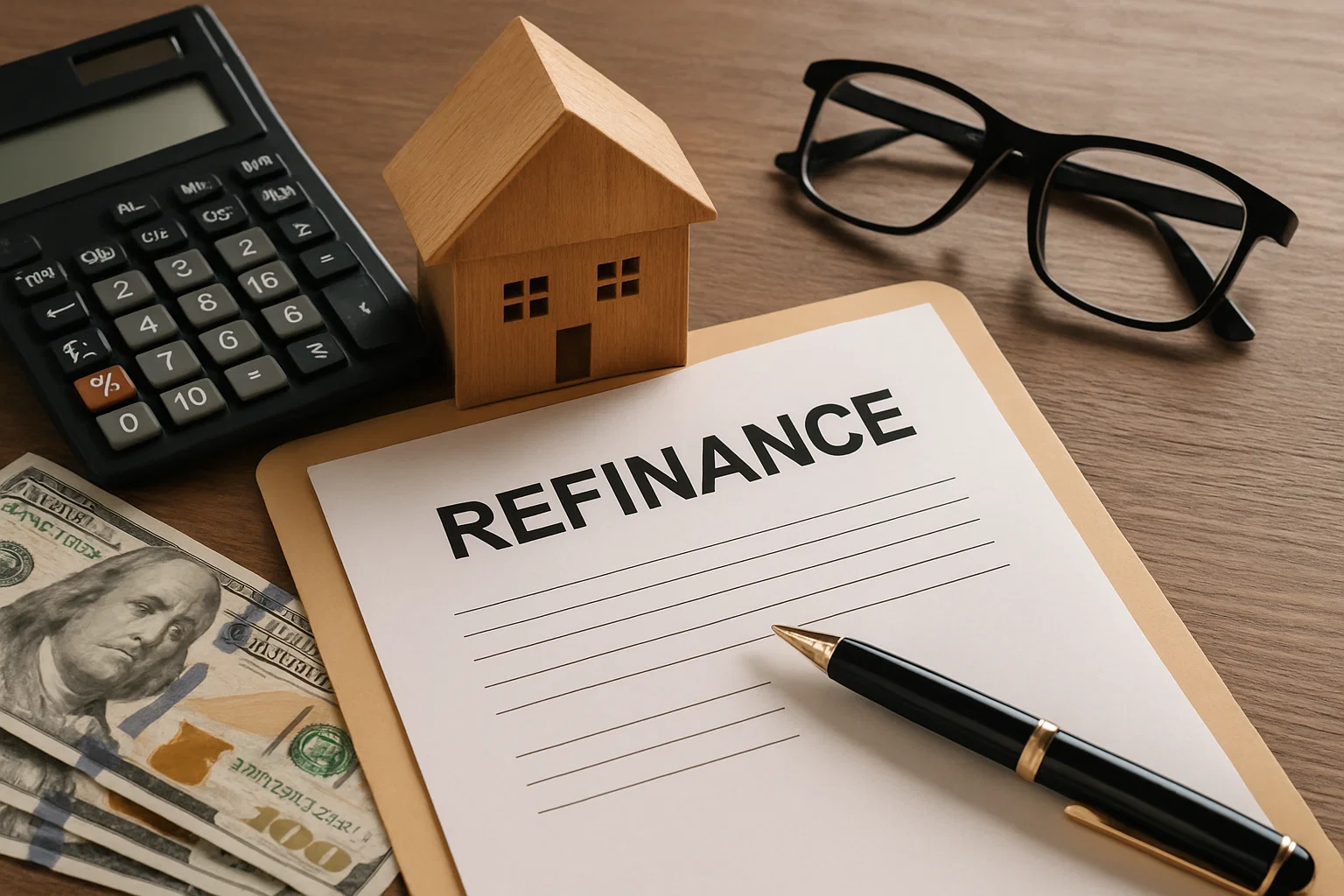
Refinancing your home loan stands as a critical financial decision that can reshape your entire economic trajectory, yet many borrowers overlook this powerful tool for improving their financial circumstances. The fundamental premise is straightforward—replacing your existing loan with a new one offering superior terms that better reflect current market conditions and your evolved financial situation. However, the strategic complexity lies in determining optimal timing, selecting appropriate refinancing approaches, and executing the process in ways that maximize long-term benefits while minimizing costs and complications. Many homeowners remain locked into loan agreements established years ago when their credit profiles were weaker, interest rates were higher, or their financial understanding was less sophisticated, missing opportunities to save substantial amounts through strategic refinancing.
The modern lending environment has become increasingly competitive, with financial institutions aggressively pursuing refinance customers through attractive promotional rates, streamlined documentation processes, and reduced fees designed to capture market share. This borrower-friendly landscape creates unprecedented opportunities for informed individuals to secure terms that deliver meaningful financial advantages. However, capitalizing on these opportunities requires more than simply responding to promotional advertisements or selecting lenders with the lowest advertised rates. Successful refinancing demands comprehensive financial analysis, clear understanding of your objectives, disciplined preparation, and strategic post-refinancing management that transforms initial savings into lasting wealth accumulation and financial security.
Determining Your Optimal Refinancing Strategy

Financial profile assessment forms the starting point for any refinancing evaluation, requiring honest analysis of how your circumstances have changed since originally securing your loan. Your credit score likely differs substantially from years ago—consistent on-time payments, reduced debt levels, and lengthened credit history typically improve scores significantly over time. If you've moved from the 680-720 range into the 750-plus category, you've crossed critical thresholds that unlock premium pricing tiers offering substantially better interest rates. Income growth through career advancement, business success, or dual-income household formation strengthens your debt-to-income ratio, demonstrating enhanced repayment capacity that lenders reward with favorable terms. Property value appreciation combined with principal paydown improves your loan-to-value ratio, reducing lender risk perception and often qualifying you for rates previously unavailable. Each improvement in your financial profile creates refinancing opportunities worth exploring, even when broader market interest rates haven't changed dramatically.
Market timing considerations influence whether current conditions favor refinancing or whether waiting might yield better opportunities. Interest rates fluctuate based on Reserve Bank of India monetary policy, inflation trends, competitive dynamics among lenders, and broader economic conditions. Rate-cutting cycles initiated during economic slowdowns create prime refinancing windows when lenders compete aggressively for customers by offering particularly attractive terms. Conversely, during rate-hiking cycles aimed at controlling inflation, refinancing becomes less attractive unless your personal financial improvements are substantial enough to offset unfavorable market movements. Monitor economic indicators and policy announcements to anticipate rate trajectories rather than reacting impulsively to short-term fluctuations. Understanding that refinancing applications surge during obviously favorable periods helps you anticipate potential processing delays and reduced negotiating leverage when everyone simultaneously pursues the same opportunities.
The specific refinancing objectives you're pursuing dramatically influence which approach delivers optimal results for your unique circumstances. Rate-and-term refinancing focuses exclusively on reducing interest rates or modifying loan duration without accessing additional funds, proving ideal for borrowers simply seeking cost reduction and payment optimization:
- Best suited when market rates have fallen significantly below your current rate or your credit improvements qualify you for premium pricing tiers
- Allows switching between fixed and floating rate structures to match your risk tolerance and interest rate outlook
- Enables tenure modification to accelerate debt elimination or reduce monthly payment burdens depending on your priorities
- Involves minimal complexity since you're not accessing additional funds or substantially changing loan amounts
Cash-out refinancing leverages accumulated home equity for strategic purposes beyond simple rate optimization, allowing you to borrow more than your outstanding balance and receive the difference as liquid funds. This approach proves valuable for major home renovations increasing property value, education expenses at favorable mortgage rates compared to education loans, or consolidating high-interest consumer debt into lower-rate mortgage obligations. However, it requires careful consideration since it increases total debt burden, extends repayment timelines, and converts unsecured obligations into secured debts backed by your property.
Executing Refinancing for Maximum Impact

Meticulous preparation dramatically improves both your approval probability and the terms you're offered. Begin by obtaining comprehensive credit reports from all major bureaus, carefully reviewing for errors or discrepancies that might artificially suppress your score. Dispute any inaccuracies through formal channels and follow up persistently until corrections appear. Strengthen your credit profile through targeted actions: reduce credit card balances below 30% of available limits; ensure all existing payments arrive consistently on time; avoid new credit applications generating hard inquiries in the months preceding refinancing. Assemble complete documentation packages including recent income proofs spanning appropriate periods, tax returns with detailed computations, bank statements demonstrating savings patterns, existing loan details showing payment history, and comprehensive property documentation. Organize these systematically, providing more than minimum requirements to demonstrate financial sophistication and accelerate processing timelines.
Strategic lender selection and negotiation separates borrowers securing excellent terms from those accepting mediocre deals. Request detailed proposals from multiple lenders spanning traditional banks, housing finance companies, and digital platforms. Each evaluates risk differently and offers varying terms based on their funding costs and competitive positioning. Create standardized comparison frameworks evaluating complete cost structures—not just interest rates but processing fees, legal charges, valuation expenses, prepayment penalties, and restrictive covenants affecting future flexibility. Calculate annual percentage rates incorporating all costs for accurate comparison across different proposals. Leverage competing offers during negotiations, as lenders frequently match or exceed rival proposals to secure desirable borrowers with strong credit profiles and substantial equity.
Disciplined post-refinancing management transforms one-time savings into lasting wealth accumulation through strategic resource deployment. If refinancing reduces monthly EMI, resist lifestyle inflation consuming these savings. Maintain previous higher payment amounts, applying differences as principal prepayment that dramatically shortens loan tenure and saves substantial additional interest beyond initial refinancing benefits:
- Continue paying ₹40,000 monthly even if new EMI is only ₹33,000, directing the ₹7,000 difference toward principal reduction
- Establish systematic investment plans channeling savings into diversified equity mutual funds generating potential returns exceeding loan interest rates
- Build robust emergency reserves covering 6-12 months of expenses before aggressive investing ensures financial shocks don't jeopardize loan payments
- Review refinanced loans annually to stay alert for additional opportunities if rates decline further or your financial profile strengthens
Long-term strategic planning ensures refinancing aligns with broader financial objectives rather than serving as isolated transaction. Consider how refinancing fits into retirement planning—eliminating housing debt before retirement provides significant financial security and flexibility during later life stages when income may decline. Evaluate whether funds freed through lower payments should be directed toward children's education savings, investment portfolio development, or business ventures that generate returns exceeding loan interest rates. Think about estate planning implications and whether accelerated loan payoff serves family wealth transfer objectives. Consult financial advisors who can provide personalized guidance integrating refinancing decisions into comprehensive financial plans addressing multiple goals simultaneously.
Refinancing succeeds when approached as strategic financial optimization requiring thorough analysis, careful preparation, aggressive comparison shopping, and disciplined implementation. Borrowers who invest effort in understanding their complete financial pictures, evaluating all available options systematically, and deploying savings strategically consistently achieve superior outcomes that compound into substantial long-term financial security and wealth accumulation.

Alex Chen

Alex Chen













Get in touch with a loan officer
Our dedicated loan officers are here to guide you through every step of the home buying process, ensuring you find the perfect mortgage solution tailored to your needs.
Options
Exercising Options
Selling
Quarterly estimates
Loans
New home

Manténgase siempre actualizado sobre artículos y guías interesantes.
Todos los lunes, recibirás un artículo o una guía que te ayudará a estar más presente, concentrado y productivo en tu vida laboral y personal.





.png)
.png)
.png)
.png)
.png)
.png)
.png)
.png)
.png)
.png)
.png)
.png)
.png)
.png)
.png)
.png)
.png)
.png)
.png)
.png)
.png)
.png)